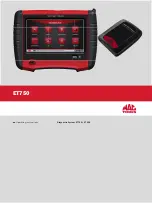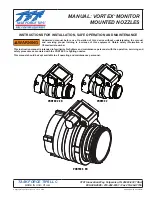G-1
Z MED Medical Air System
4107 9022 67.00
G.1 General Information
CAUTION:
This manual is designed to serve as
the operation and maintenance guide for your Oil
Entrainment Indicator. The contents of this man-
ual should be carefully read BEFORE attempting
any phase of operation or maintenance. Failure
to follow the operating and maintenance proce-
dures of the instruction manual could result in
personal injury or property damage.
All information, specifications and illustrations
within this manual are those in effect at the time
of printing. The manufacturer reserves the right
to change or make improvements without notice
and without incurring any obligation to make
changes or add improvements to products pre-
viously sold.
To facilitate maintenance, recommended spare
parts for Oil Indicator are available. Failure to
maintain recommended spare parts might re-
sult in expensive and unnecessary downtime for
which the manufacturer cannot be responsible.
To request a quotation of, or place an order for,
recommended or emergency spare parts, please
contact
BeaconMedæs
Technical Services de-
partment at 1-888-4MEDGAS (888-463-3427).
G.2 Function
The Oil Indicator is a calibrated measuring
instrument used to detect aerosol mist levels
of oil entrainment that may be present in the
medical air system. Sensitivity of the indicator
is limited only by the total number of hours it
is allowed to remain on the air supply system.
The indicator is sensitive enough to measure a
concentration of oil entrainment as low as .01
ppm (.012 mg/m3) in a compressed air system.
It can be used in systems with line pressures
between 10 and 125 psig (70 and 875 kPa). Inline
pressure regulator for oil indicator factory set at
50 psig. NFPA requires a 0.05 ppm ± 0.03 ppm
reading or better in the air stream.
Appendix G - Oil Indicator
WARNING!
If the pressure exceeds 125 psig or the
retaining nut is loosened, the oil indicator
tube could blow out of the compression
fitting, creating a hazardous condition.
FIG G.1 Oil Indicator Assembly


















